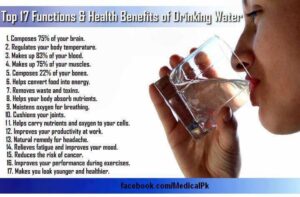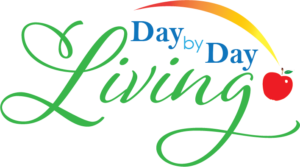How to Determine Your Daily Fluid Needs

An adequate intake of fluids daily is very important to achieve your athletic success whether you are a recreational or competitive pickleball player, tennis player, walker, runner, triathlete, ultramarathoner or cyclist, etc. Getting an adequate amount of fluids each day is also a great strategy for your overall health.
There are 2 ways you can determine your daily fluid needs.
- One way is to pick your calorie needs using Table 1. Calorie Needs for Women and Men then divide the number by 30 to equal the number of ounces of fluid you need each day.
- The other way which is more accurate is to use the Calorie Calculator
Method 1
Table 1. Calorie Needs for Women*
Age Calories Calories Calories
Sedentary Moderately Active Active
21-25 2,000 2,200 2,400
26-30 1,800 2,000 2,400
31-50 1,800 2,000 2,200
51-60 1,600 1,800 2,200
61 & up 1,600 1,800 2,000
Calorie Needs for Men*
Age Calories Calories Calories
Sedentary Moderately Active Active
21-25 2,400 2,800 3,000
26-35 2,400 2,600 3,000
36-40 2,400 2,600 2,800
41-45 2,200 2,600 2,800
46-55 2,200 2,400 2,800
56-60 2,200 2,400 2,600
61 & up 2,000 2,200-2,400 2,400-2,600
*Source: Dietary Guidelines for Americans 2020-2025, Office of Disease Prevention and Health Promotion.
Method 2
To determine how many calories, you need per day use the following calculator, https://www.calculator.net/calorie-calculator.html.
Definitions of Activity for the Calorie Calculator
Sedentary: Little or no exercise
Light: Exercise 1 – 3 times per week
Moderate: Exercise 4 – 5 times/week
Active: Daily exercise or intense exercise 3 – 4 times/week
Very Active: Intense exercise 6 – 7 times/week
Extra Active: Very intense exercise daily or physical job
Your Daily Individual Fluid Needs
Your Daily Caloric Intake should be: ______________
Then, Daily Calorie Intake/30
Your Daily Fluid Intake is: _______________ oz/day
Example,
Your Daily Caloric Intake should be: 2000 calories
2000/30
RULE: 30 grams(g) of fluid = 1 ounce of fluid
Your Daily Fluid Intake is: 66.6 oz/day
RULE : 1 cup of fluid = 8 ounces of fluid

Weighing Before and After Exercise in the SUMMER HEAT or During Two-A-Day Practices
When competing or training during the summer heat, playing in all day tournaments, during Two-A-Day practices, it would be a good practice to weigh yourself before you exercise and after you exercise to get an idea on how many fluids you need to consume for rehydration to occur. (Weighing nude is more accurate). If you are exercising daily and start your training dehydrated your performance will suffer. For every pound of weight you lost post exercise, the ACSM recommends you should consume 16-24 ounces of fluid or 2 to 3 cups of fluid. Check out Table 4. Symptoms of Mild-to-Moderate Dehydration and Table 5. Symptoms of Severe Dehydration: LIFE THREATENING which details the symptoms of dehydration.
Table 2. Estimated Fluid Replacement Based on Weight Loss
Weight Lost Fluid to Replace Lost
1 pound 16-24 ounce (2 to 3 cups)
2 pound 32-48 ounce (4 to 6 cups)
4 pound 64-96 ounce (8 to 12 cups)
Best Beverages for Rehydration
Besides water, any beverages will help with the rehydration process. Beverages with caffeine may not be a best beverage of choice. Sport drinks, fruit juices, coconut water, Pedialyte, smoothies, milk, soda without caffeine contain sugar and calories as well. Fruits such as citrus fruits, grapes, watermelon, and even popsicles contain water and contribute to your fluid requirement. You can also make your own sports drink. See the recipe below to Make a Homemade Sports Drink.
Table 3. Fresh Foods that Contain High Amounts of Water
Broccoli Lettuce Berries
Peaches Cauliflower Peppers
Celery Spinach Citrus Fruits
Tomatoes Cucumbers Watermelon
Grapes
Homemade Sports Drink
Yield: 1 quart
¼ cup sugar
¼ tsp salt
¼ cup hot water
¼ cup fresh orange juice (not from concentrate)
2 tbsp lemon juice*
3 ½ cup cold water
In the bottom of a pitcher, dissolve the sugar & salt in the hot water.
Add juice & water & stir. Chill.
50 calories per 8 oz.
12 g Carbohydrate
110 milligrams of sodium
*You can make it without lemon juice but not as flavorful.
Table 4. Symptoms of Mild-to-Moderate Dehydration
Thirst
Headache, dizziness or light-headedness
Dark yellow urine
Dry or sticky mouth
Decreased urine output
Sleepiness or fatigue
Constipation
Dry skin
Table 5. Symptoms of Severe Dehydration: LIFE THREATENING
Extreme thirst
Irritability or confusion
Unconsciousness or delirium
Very dark yellow or amber-colored urine
Rapid breathing
Rapid heartbeat
Lethargy
Image from: https://www.momsintofitness.com/fueling-your-youth-athlete/
Feature image from: https://silverleafeldercare.com/https-rubyshomecare-com-the-importance-of-hydration-for-older-adults/
![]()

By Barbara Day, M.S., R.D. is a registered dietitian with a Master’s Degree in clinical nutrition. She is the Chief Blog Organizer for www.DayByDayLiving.net
Barbara worked as a research nutritionist with the military’s tri-service medical school & working as a performance nutrition consultant to Navy SEALS’ BUD/S Training Program and West Coast active Navy SEAL Teams. Barbara is the former nutrition performance consultant to the University of Louisville Athletic Department. She is the author of Fast Facts on Fast Food for Fast People and High Energy Eating Sports Nutrition Workbook for Active People used by the University of Louisville, University of Tennessee Lady Vols and the Tennessee football program, the LSU basketball program, the Buffalo Bills, the Cleveland Browns and by the United States Navy SEALs.
The former publisher of Kentuckiana HealthFitness Magazine, Kentuckiana Healthy Woman magazine and radio show host of Health News You Can Use, Barbara has over 30 years of experience in promoting healthy lifestyles to consumers. Barbara is a former runner who walks, a spinner, hiker a mother and grandmother to 13 grandchildren.

